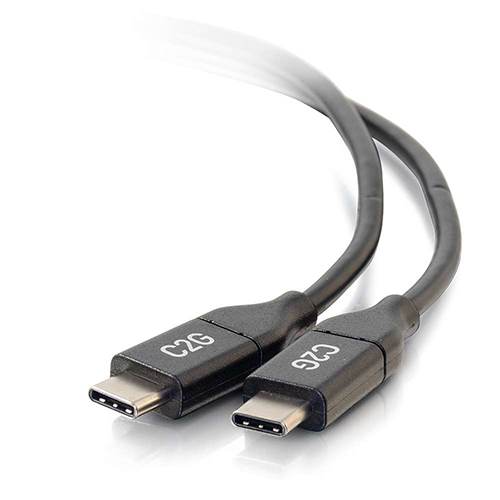Posted on 5/18/2020 by Legrand AV Team
Technology’s been changing in fits and starts for what feels like an eternity. USB 2.0 was released in 2000 and ruled the roost until USB 3.0 made its appearance in late 2008. The challenge is that these formats didn’t enjoy widespread application in the AV community until the proliferation of desktop conferencing and streaming media reached critical mass in 2010 and beyond. High performance AV applications for docking solutions have been playing catch-up ever since.
We are about a decade into this convergence and we are struggling with USB 3.1 Gen 1, USB 3.1 Gen 2, Thunderbolt 3.0, DisplayPort 2.0. Pretty soon you'll be able to add USB 4.0 to the list.
This alphabet soup of USB formats will be powered by a new physical connection that’s been optimized for next-generation data and AV demands. USB Type-C is here, and it will profoundly change the nature of mobile computing, techniques of mobile device integration, and the role of the docking station.
What is USB Type-C?
USB Type-C is one of the most sophisticated and comprehensive connectivity ports to ever exist. Unfortunately, it is also one of the most misunderstood and confusing. It's a small, symmetrical connection that might be found on virtually any device from smartphones to advanced storage drives. It enables a veritable gourmet menu of technical capabilities, including adaptive power and dynamically assignable channels that can support a smorgasbord of digital payloads.
Look at the following image of the USB Type-C connector pin-out. There are no less than two dozen connection points in a space just over 8mm wide. This sleek connector is tailored to fit mobile device product designs, yet robust enough for laptops and tablets. With a reversible plug orientation and cable direction, USB Type-C supports scalable power and performance to future-proof your solution. The well-designed docking station is where the versatility and performance promised by this advanced technology is concentrated. The challenge for AV professionals is identifying which docking stations are well-designed and which features are best deployed in a specific installation.

The transformative power of the Type-C ecosystem is found in its use of something called Alternate Mode. This is a new addition to the USB lexicon. Comprised of four shielded-twisted-pairs, each individual Alt Mode lane can be associated with a separate signal on a dynamic basis. For example, when connecting a laptop to a docking station, two lanes may support DisplayPort AV to serve two monitors while a third lane provides connectivity to the LAN and the fourth supports data transfer to connected storage devices.
Power to charge and run devices has also been addressed in a comprehensive (if not intuitive) manner. Up to 100 watts of power is available via a series of discrete power profiles. Connected devices negotiate with the power supply, host, and connecting cables through the use of electronic markers that ensure end-to-end functionality.
This is the next generation of connectivity and it's blurring the line between computer peripheral and AV component. This is a year of important technical evolution as the worlds of mobile electronics, IT and AV continue to merge and reveal new capabilities - and new opportunities.
See more USB-C docking stations at the C2G site.
Learn more about universal docking stations and USB-C ports in our newest Whitepaper,

 All News
All News